Landforms
Landforms are natural features of the Earth's surface. They are formed by various geological processes such as erosion, deposition, volcanic activity, and tectonic plate movement.
Types of Landforms
There are several types of landforms, including:
- Mountains: Elevated landforms with steep slopes and high peaks, often formed by tectonic plate movement and volcanic activity.
- Plateaus: Flat, elevated areas of land with steep sides, often formed by volcanic activity or erosion.
- Plains: Broad, flat areas of land with relatively low relief, often formed by deposition of sediments.
- Valleys: Low areas of land between hills or mountains, often formed by erosion from water or glaciers.
- Deserts: Dry, arid regions with sparse vegetation, often formed by a lack of precipitation and high temperatures.
- Islands: Landmasses completely surrounded by water, often formed by volcanic activity or tectonic processes.
- Peninsulas: Landforms surrounded by water on three sides, often formed by erosion or tectonic activity.
Formation of Landforms
Landforms are formed through various geological processes:
- Erosion: The wearing away of the Earth's surface by wind, water, or ice, leading to the formation of valleys, canyons, and other landforms.
- Deposition: The laying down of sediments by wind, water, or ice, resulting in the formation of plains, deltas, and beaches.
- Volcanic Activity: The eruption of molten rock, ash, and gases onto the Earth's surface, leading to the formation of mountains, plateaus, and islands.
- Tectonic Plate Movement: The shifting and collision of the Earth's crustal plates, resulting in the formation of mountains, valleys, and other landforms.
Study Tips
To study landforms effectively, consider the following tips:
- Use visual aids such as maps, diagrams, and photographs to understand the characteristics of different landforms.
- Learn about the geological processes that contribute to the formation of landforms, such as erosion, deposition, and volcanic activity.
- Observe real-world examples of landforms in your local area or through virtual field trips to different geographical regions.
- Practice identifying and labeling landforms on maps and satellite images to improve your recognition skills.
- Explore the relationship between landforms and environmental factors such as climate, vegetation, and human activities.
[Landforms] Related Worksheets and Study Guides:
.◂Science Worksheets and Study Guides Eighth Grade. Plate tectonics
Study Guide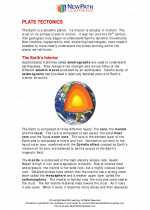 Plate tectonics
Plate tectonics  Activity Lesson
Activity Lesson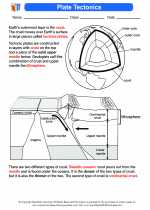 Plate Tectonics
Plate Tectonics  Worksheet/Answer key
Worksheet/Answer key Plate tectonics
Plate tectonics  Worksheet/Answer key
Worksheet/Answer key Plate tectonics
Plate tectonics  Worksheet/Answer key
Worksheet/Answer key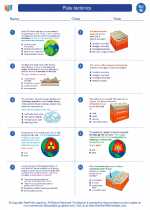 Plate tectonics
Plate tectonics  Worksheet/Answer key
Worksheet/Answer key Plate tectonics
Plate tectonics  Vocabulary/Answer key
Vocabulary/Answer key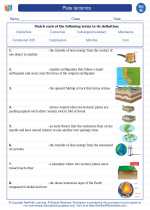 Plate tectonics
Plate tectonics  Vocabulary/Answer key
Vocabulary/Answer key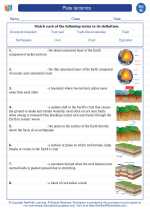 Plate tectonics
Plate tectonics  Vocabulary/Answer key
Vocabulary/Answer key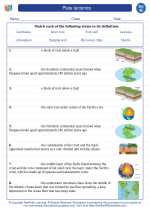 Plate tectonics
Plate tectonics  Vocabulary/Answer key
Vocabulary/Answer key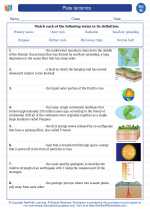 Plate tectonics
Plate tectonics  Vocabulary/Answer key
Vocabulary/Answer key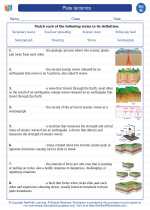 Plate tectonics
Plate tectonics  Vocabulary/Answer key
Vocabulary/Answer key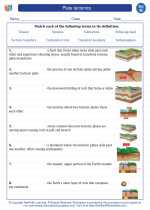 Plate tectonics
Plate tectonics  Vocabulary/Answer key
Vocabulary/Answer key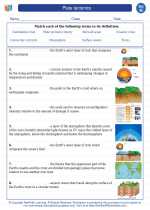 Plate tectonics
Plate tectonics 

 Activity Lesson
Activity Lesson
 Worksheet/Answer key
Worksheet/Answer key
 Worksheet/Answer key
Worksheet/Answer key
 Worksheet/Answer key
Worksheet/Answer key
 Worksheet/Answer key
Worksheet/Answer key
 Vocabulary/Answer key
Vocabulary/Answer key
 Vocabulary/Answer key
Vocabulary/Answer key
 Vocabulary/Answer key
Vocabulary/Answer key
 Vocabulary/Answer key
Vocabulary/Answer key
 Vocabulary/Answer key
Vocabulary/Answer key
 Vocabulary/Answer key
Vocabulary/Answer key
 Vocabulary/Answer key
Vocabulary/Answer key
